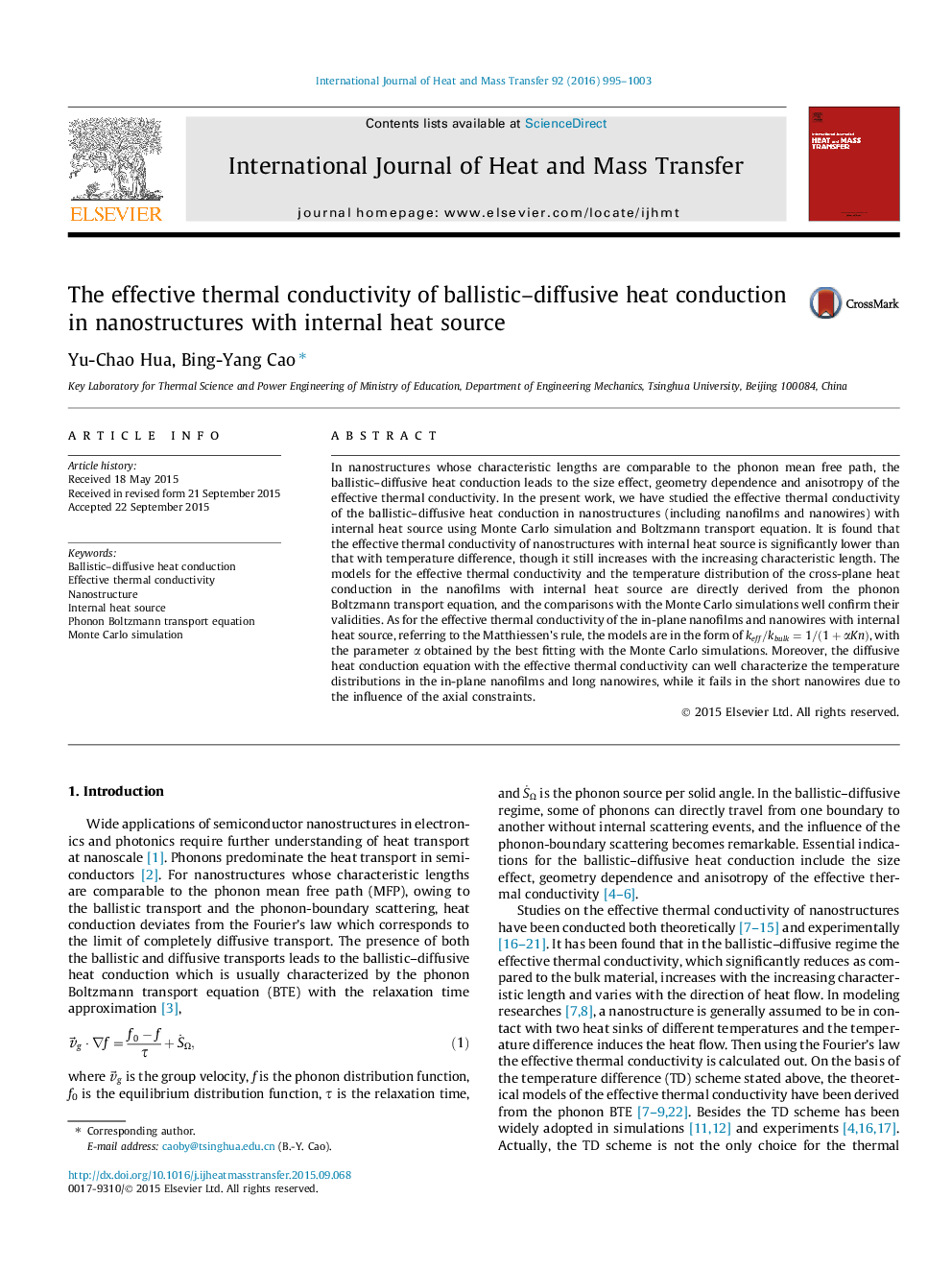| Article ID | Journal | Published Year | Pages | File Type |
|---|---|---|---|---|
| 656600 | International Journal of Heat and Mass Transfer | 2016 | 9 Pages |
Abstract
In nanostructures whose characteristic lengths are comparable to the phonon mean free path, the ballistic-diffusive heat conduction leads to the size effect, geometry dependence and anisotropy of the effective thermal conductivity. In the present work, we have studied the effective thermal conductivity of the ballistic-diffusive heat conduction in nanostructures (including nanofilms and nanowires) with internal heat source using Monte Carlo simulation and Boltzmann transport equation. It is found that the effective thermal conductivity of nanostructures with internal heat source is significantly lower than that with temperature difference, though it still increases with the increasing characteristic length. The models for the effective thermal conductivity and the temperature distribution of the cross-plane heat conduction in the nanofilms with internal heat source are directly derived from the phonon Boltzmann transport equation, and the comparisons with the Monte Carlo simulations well confirm their validities. As for the effective thermal conductivity of the in-plane nanofilms and nanowires with internal heat source, referring to the Matthiessen's rule, the models are in the form of keff/kbulk=1/(1+αKn), with the parameter α obtained by the best fitting with the Monte Carlo simulations. Moreover, the diffusive heat conduction equation with the effective thermal conductivity can well characterize the temperature distributions in the in-plane nanofilms and long nanowires, while it fails in the short nanowires due to the influence of the axial constraints.
Related Topics
Physical Sciences and Engineering
Chemical Engineering
Fluid Flow and Transfer Processes
Authors
Yu-Chao Hua, Bing-Yang Cao,
